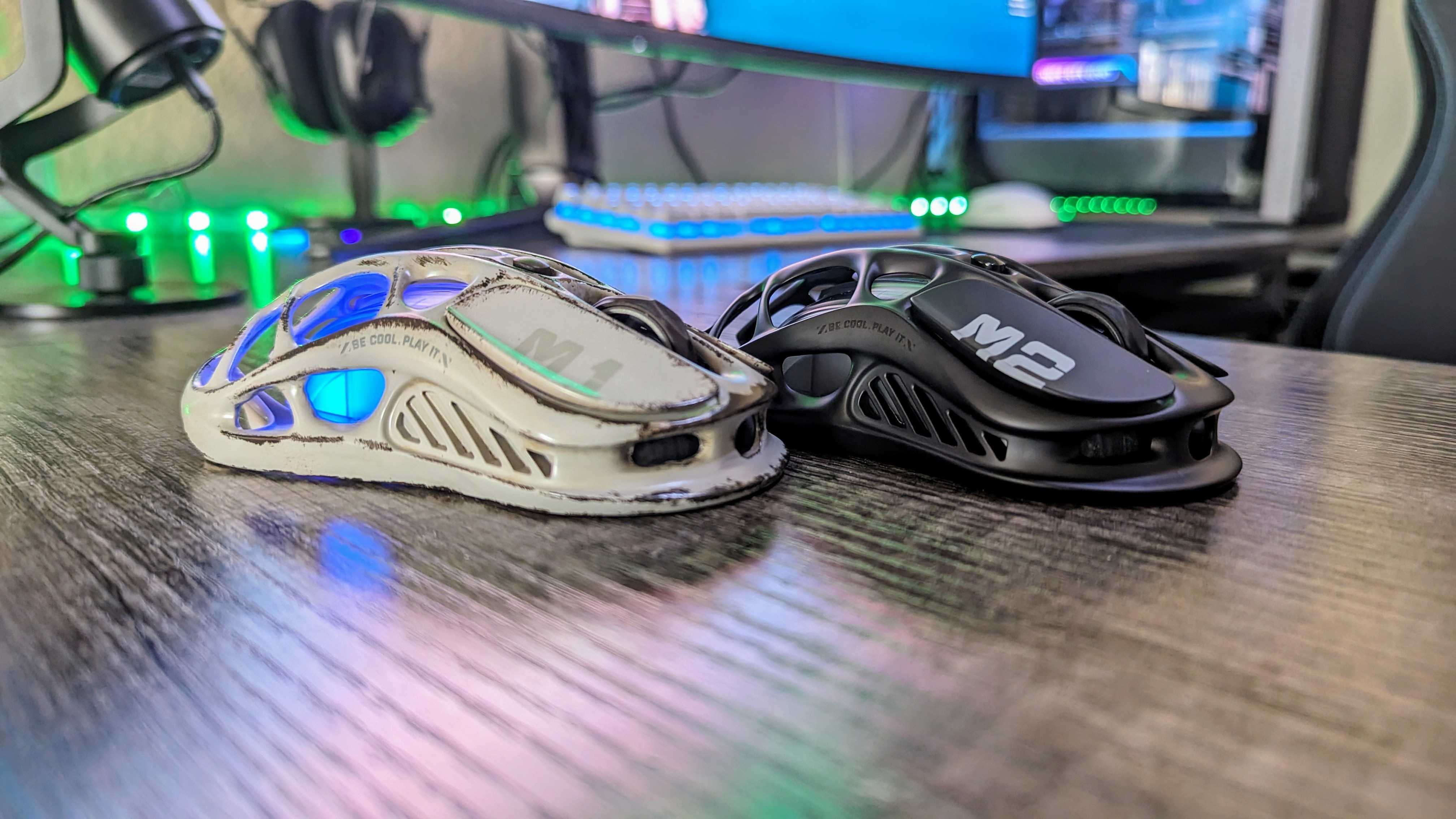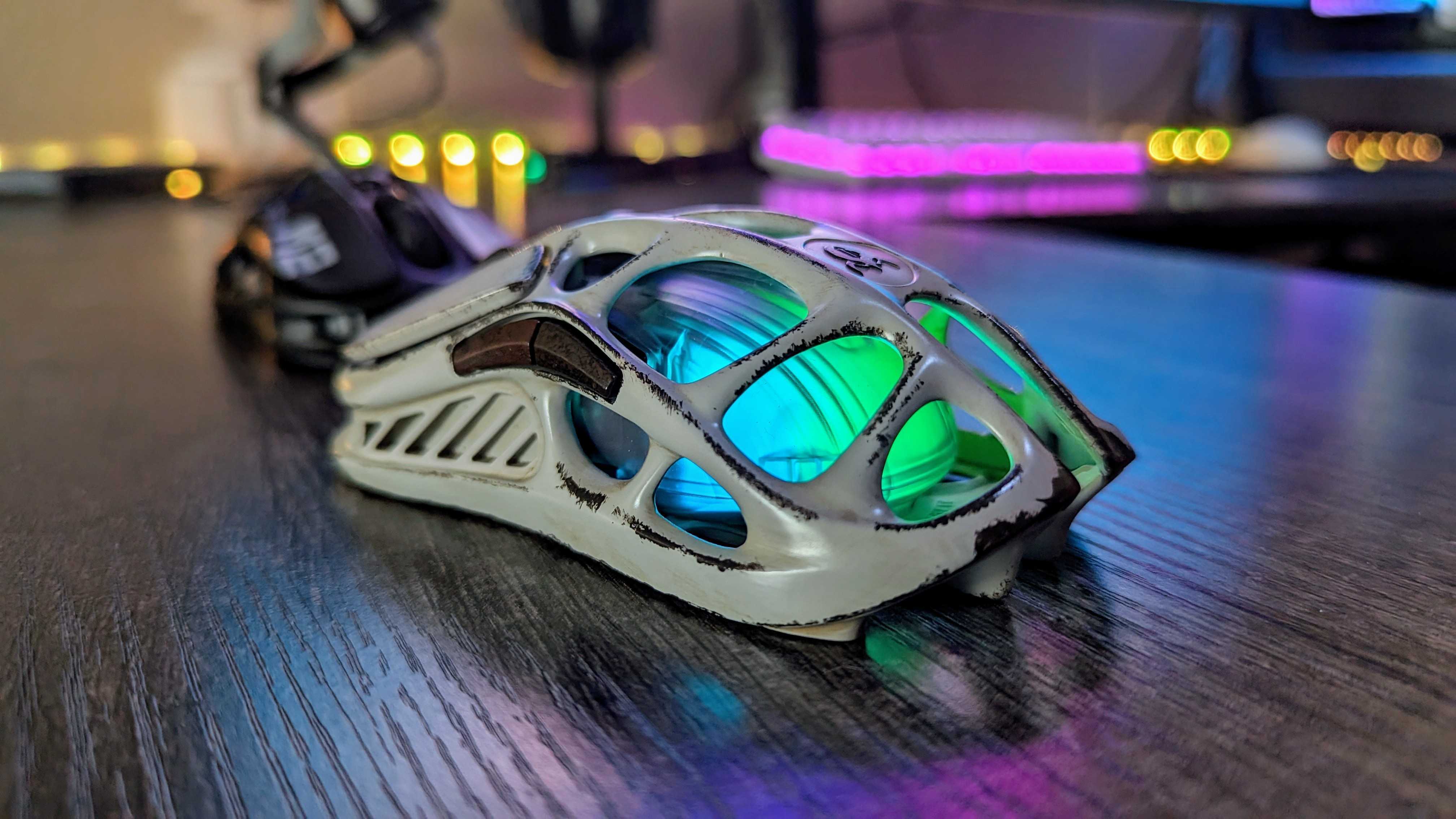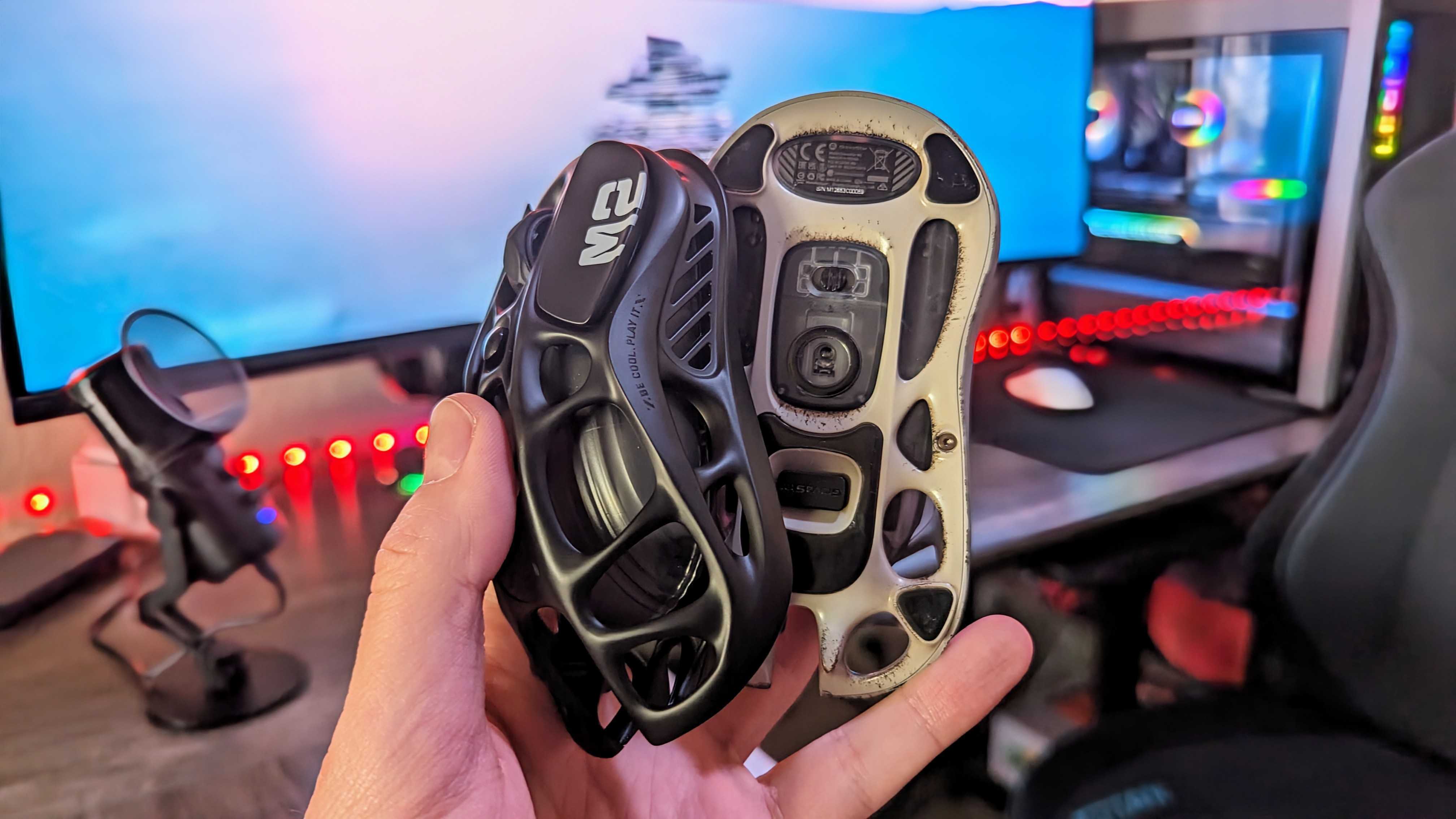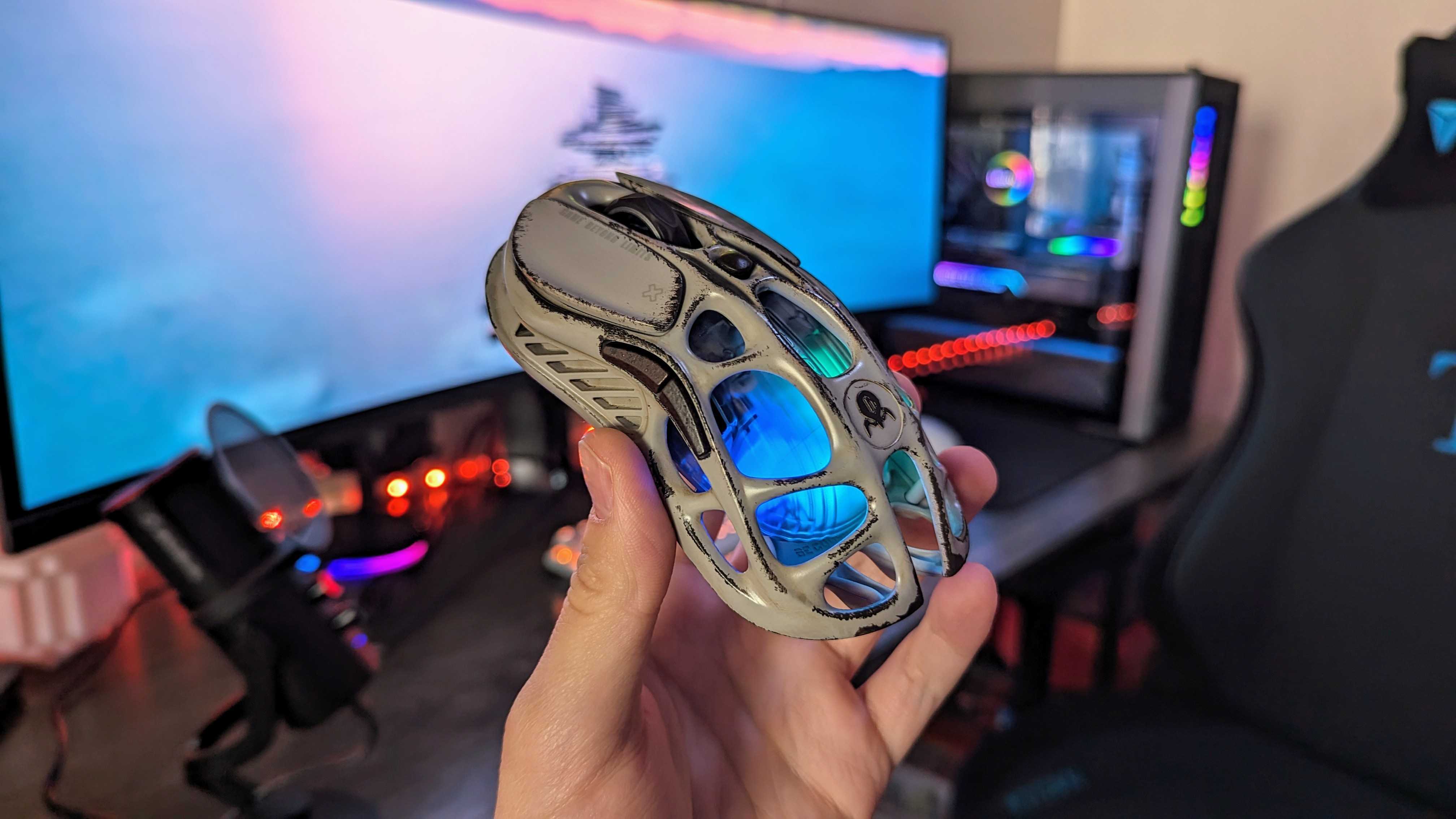
A short while ago, a company of which I had never heard reached out to me with an opportunity to check out some of its latest products. After a brief session perusing its website and a look into the offered accessories, I decided to take a chance and agreed. Not long after that, I had in my possession two premium wireless gaming mice from the unique, heavily sci-fi inspired brand GravaStar.
I was immediately impressed by the incredibly distinct design of GravaStar's debut gaming mice; even Windows Central's Editor-in-Chief, Daniel Rubino, was struck by the aesthetics of the GravaStar Mercury M1 Pro and Mercury M2 when I briefly showed them off during a team meeting. After using them, it quickly became clear that there was far more to GravaStar's wireless gaming mice than just looks. One seemingly minor flaw prevents these mice from claiming a permanent place in my setup, though.
Disclaimer: This article was made possible with review units provided by GravaStar. The company did not see the contents of this article before publishing.
A different kind of wireless gaming mouse

• Price: $99.95 at GravaStar | $129.95 at GravaStar (Battle Worn Edition w/ 4K receiver)
• Specs: Up 26,000 DPI, up to 4,000Hz polling rate (optional 4K receiver required), OMRON Blue Point micro-switches (rated for 50 million clicks), magnesium-alloy body
• Connectivity: Wireless via 2.4GHz dongle, wireless via Bluetooth, wired via USB Type-C
• Battery life: Up to 146 hours (2.4GHz), up to 200 hours (Bluetooth)
• Weight: 88g
It only takes one look to come to the conclusion that the GravaStar duo of wireless gaming mice isn't quite like other mice on the market. Sure, there are plenty of other alternatives that feature a hollow, exoskeleton-like design (the Razer Viper Mini Signature Edition is a prime example of that design taken to its limits), but GravaStar is seeking to stand out with a sci-fi aesthetic unlike any other mouse on the market. Aggressive curves and lines outline an internal, RGB-lit housing reminiscent of a glittering scarab, while protruding buttons and a flared base almost make GravaStar's mice look like a futuristic car from the front.
As pure mice, the Mercury M1 Pro and Mercury M2 aren't particularly unique. You get high-performance sensors with support for up to 26,000 DPI, which is pretty standard for this price range of mice. You also get support for up to a 4,000Hz polling rate on the Mercury M1 Pro (you'll need a different, optional dongle to reach those rates), making the mouse more responsive during intense gaming sessions. Neither mouse claims to be particularly light, but many players actually prefer that. Connectivity is also great, with both mice able to connect via the classic 2.4GHz wireless dongle, Bluetooth, or a USB Type-C cable.
The GravaStar Mercury M1 Pro costs $99.95 at GravaStar, which is for the standard gunmetal grey version with a 2.4GHz wireless dongle capable of a 1,000Hz polling rate. If you want a measure of exclusivity and the fastest performance possible, you can pick up the Battle Worn Edition for $129.95 at GravaStar, which includes the unique, insect-like 2.4GHz wireless dongle supporting up to a 4,000Hz polling rate. Finally, the more affordable GravaStar Mercury M2 can be had for $79.95 at GravaStar. This mouse is largely identical to its more expensive sibling, but you get an all-black colorway, the polling rate caps out at 1,000Hz, and you trade a significant amount of battery life for a lower weight.
A distinct design, great performance, and lots of features

From the moment you pick up the GravaStar Mercury M1 Pro, you'll be struck by the look and feel of it. The design is undoubtedly distinct, but it's also incredibly solid thanks to the magnesium frame, and has a decent amount of weight to it. Each button has a responsive, tactile click behind it, and the PFTE feet ensure a consistent, even slide across various surfaces. The hardware itself proves this is a premium mouse, and it has the performance to back it up.
When gaming, the Mercury M1 Pro is reliably quick, with an incredibly stable, low-latency wireless connection. You unfortunately need a separate 2.4GHz wireless dongle to enable a 4,000Hz polling rate (the design of which also appears vaguely insect-like), similar to Razer and its HyperPolling premium dongle, but even at the 1,000Hz polling rate standard with many gaming mice, the Mercury M1 Pro is a very strong performer. Specs-wise, its capabilities don't quite match up to the best from companies like Razer, but it's still beyond what most gamers will actually take advantage of.

When you need to customize your settings, GravaStar's PC app is well-featured and decently well-designed (I wish there were more labels on icons when hovering, as some are unclear). You can configure and save up to 6 DPI profiles to the mouse's onboard memory, configure macro shortcuts and remap all six buttons, customize the RGB lighting, update the firmware, and even edit in-depth performance settings like lift-off distance, debounce time, motion sync, and other options aimed at helping you achieve the perfect balance between responsiveness, smoothness, and stability.
The Mercury M1 Pro also boasts very respectable battery life, getting up to 200 hours of continued usage on Bluetooth; RGB lighting definitely cuts down that time by a lot, but you still won't have to charge this mouse every day. And, yes, it features an easy-to-use switch to change between 2.4GHz and Bluetooth wireless modes, letting you connect to two different devices. The Mercury M2 I also tested is almost identical in every way to the Mercury M1 Pro, but there are some differences — the weight is lower, the battery life is significantly shorter, and you're hard limited to a 1,000Hz polling rate regardless of the dongle you're using. For $20 less, though, those are reasonable compromises.
One small gap between it and the industry greats

If it seems like GravaStar has a couple of winners on its hands, you would be (mostly) right. Unfortunately, one tiny flaw in the design of both the Mercury M1 Pro and Mercury M2 guarantees that I'll be going back to my favorite mice from companies like Razer and Alienware. It's a gap, both physical and metaphorical, that separates GravaStar from the best in the industry for me.
You see, the two main buttons on both mice are actually separated in the middle by a disparity. No, I don't just mean for the scroll wheel; the magnesium frame further separates the buttons, with the gap increasing toward the front of the mouse. Its opposite isn't something I ever notice on other mice, and it's not anything that would've come to mind before using the Mercury M1 Pro and Mercury M2, but this matters.

By necessity, your fingers need to be spread farther apart to use the left and right mouse buttons intuitively and consistently. This seemingly insignificant shift in your mouse grip may feel odd at first, but after a few minutes you become accustomed, and it appears that GravaStar's mice are just as comfortable as they are performant, with no apparent downsides when gaming. However, I repeatedly noticed that extended use of these mice led to mild fatigue and strain in my fingers, something I have never experienced using any other product. Again, it's a tiny fault — an infinitesimal rift that causes a negligible issue... But it's an issue the best gaming mice simply don't have.
If you game for hours on end, you'll notice that slight discomfort. It's not painful, and it's not debilitating, but it's present. That downside is enough for me to put aside the GravaStar Mercury M1 Pro and Mercury M2 in favor of the Alienware Pro Wireless Gaming Mouse I'm now in the process of reviewing (you'll have to wait longer for that).
A curious company making curious products

GravaStar is an intriguing company. Its founder boasts over 10 years of industrial design experience, and uses that experience to create a variety of tech products heavily inspired by popular sci-fi franchises. The result is a family of truly wild speakers, ear buds, and more. Now, that lineup also includes high-end wireless gaming mice.
I'm really glad companies like GravaStar exist, and I hope it thrives; having such a unique design language certainly helps with that. The Mercury M1 Pro and Mercury M2 are also both very good overall — maybe even some of the best gaming mice around (emphasis on "maybe"). They're heavy and a little expensive, but the quality and performance here is wonderful. One design decision makes the mice less comfortable to use during long gaming sessions than the best in the industry, though. If that doesn't deter you, I personally recommend the GravaStar Mercury M2. I love it's all-black colorway, and the compromises it makes to reach a lower price point are very reasonable.
The GravaStar Mercury M1 Pro and Mercury M2 are now available to preorder for $99.95 at GravaStar and $79.95 at GravaStar, respectively, with an expected release date of Feb. 12, 2024.







